In-Depth Guide to Matting Prevention
Matting isn’t just a matter of appearance; it’s a crucial health concern for your furry friends.
At Hachi Dog Grooming in Kendall, we often encounter pet owners dealing with the challenge of their dogs’ matted fur. It’s a common scenario in our salon, highlighting a prevalent issue in dog care. As dedicated groomers, we understand the challenges and nuances of keeping your furry friend’s coat smooth and healthy.
With this guide our goal is to illuminate this problem and provide effective, easy-to-implement solutions. Let’s dive into the essentials of matting and how to prevent it, ensuring your dog stays comfortable, happy, and looking their best.
What is Dog Matting
Dog mats are more than just unsightly; they’re tangled clusters of hair that can cause discomfort for your dog. Understanding the difference between simple tangles, tight knots, and dense felts is the first step in understanding why matting happens and prevent it.
- Simple tangles: These are loose entanglements of hair, that often happens on the coat surface. These are usually easy to brush out with regular grooming.
- Tight knots: Hair that has twisted and wrapped tightly, can form close to the skin. Resolving them require careful, patient detangling to avoid pulling the skin.
- Dense Felts: Thickly matted hair forming a felt-like texture, often a result of prolonged neglect. Need professional grooming to safely remove (shave) without harming the dog
Why Dog Matting Happens
There’s a variety of reasons why dogs get mats:
- Coat type: Thick, curly, or long hair is particularly prone to matting.
- Active lifestyle: More play means more chances for tangles.
- Accessories: Collars, leashes and dog apparel can create tangles.
- Climate: Humidity can turn a sleek coat into a magnet for knots.
In many cases, the matting will be caused for more than one of these reasons .
What are the Risks Associated with Dog Matting
Mats are more than just cosmetic concerns; they can pose real health risks. Understanding these dangers is another crucial step in proactive pet care.
Skin Health at Risk
- Tension on Skin: Mats pull tightly on your dog’s skin, leading to discomfort and potential pain.
- Risk of Irritation and Infection: The constant pull and lack of air circulation can irritate the skin, creating sores and increasing the risk of bacterial infections.
Unseen Pests
- Harboring Parasites: Mats provide the perfect environment for fleas and ticks to hide and thrive, undetected.
- Compromised Health: These parasites can lead to further skin issues, allergic reactions, and even transmit diseases to your dog.
The Emotional Toll on Your Pooch
- Increased Stress and Anxiety: Dogs with matted coats can become noticeably stressed or anxious. The discomfort from mats can lead to behavioral changes such as irritability or a decline in social interaction.
- Pain-Induced Behavior: As mats can be quite painful, your dog may react adversely to grooming or petting, which can strain the bond you share.
How to Prevent Dog Matting
Preventing mats is far more effective—and kinder to your pooch—than trying to remove them after they’ve formed. As experienced groomers we have seen firsthand the difference a proactive approach can make. Broadly speaking there are two main practices you need to follow to prevent matting.
Take Proactive Care at Home
- Daily Brushing: A regular brushing routine is the cornerstone of mat prevention, suitable for every dog’s daily schedule.
- Diet and Nutrition: A healthy coat starts from the inside out. Proper nutrition plays a significant role in preventing mats.
Seek Professional Insight
- Expert Grooming: Some coats, particularly those that are long, curly, or thick, may need the skilled touch of a professional groomer to prevent and manage matting.
- Wellness Checks: Regular vet visits can ensure your dog’s skin and coat are healthy, making them less prone to matting.
Combining these practices will not only keep mats at bay but also contribute to your dog’s overall skin health.
Now lets transition to the “5 Secrets for a Healthier Dog Coat,” and we will put together all what is needed to prevent matting.
The 5 Secrets to Avoid Dog Matting
At Hachi Dog Grooming, we’ve honed our expertise over years of caring for all types of dog coats. We’re excited to share with you the five key secrets to avoid dog matting. Each of these secrets is a gateway to a specific aspect of grooming and care, which we will explore in detail in the following sections.
Secret 1: Engage on a Regular Brushing Routine at Home
Implementing a consistent brushing routine is vital for maintaining a healthy dog coat. Not only does it keep the fur smooth and detangled, but it also serves as an opportunity to check the skin for any issues like parasites, bumps, or cuts.
- Effective Brushing Strategies: Brushing is more than just running a comb through your dog’s fur. It’s about understanding the unique needs of your dog’s coat type. For instance, dogs with double coats require a different brushing approach compared to those with single coats. Brushing not only removes dead hair and dirt but also stimulates blood flow to the skin, promoting healthy hair growth.
- Selecting Ideal Grooming Brushes: The right brush makes all the difference. For short coats, a rubber grooming mitt or a bristle brush works well to remove loose fur without irritation. For long, flowing coats, a slicker brush or a long-toothed undercoat rake can efficiently detangle and remove undercoat without damaging the topcoat.
- Brushing Techniques for Dog Grooming: Mastering the right brushing technique is essential. For example, using short, gentle strokes prevents pulling and discomfort, especially in sensitive areas like behind the ears and under the arms. Additionally, regular brushing sessions can become bonding moments between you and your pet, strengthening your relationship.
In conclusion, a regular brushing routine not only keeps matting at bay but also ensures that your dog’s coat remains glossy, healthy, and free of debris. It’s a cornerstone of effective dog grooming that every pet owner should embrace.
For a more detailed explanation of the Routine you need to follow at home, please read our article Preventing Dog Matting at Home: A 5 Step Guide
Secret 2: Using Optimal Nutrition for Dog Coat Health
Just like in humans, a dog’s diet directly impacts its skin and coat health. A nutritious diet ensures that your dog gets all the necessary elements to maintain a healthy coat.
- Diet: The Foundation of Coat Health: The foundation of a healthy coat is a well-balanced diet. Foods rich in omega fatty acids, like fish or flaxseed oil, promote a shiny, healthy coat. Protein is another crucial component, as it’s the main building block of hair. High-quality, animal-based proteins provide the amino acids necessary for robust and resilient fur.
- Supplements: The Extra Mile for Coat Brilliance: Sometimes, diet alone isn’t enough, especially for dogs with specific skin and coat needs. Supplements like omega-3 and omega-6 fatty acids, zinc, and vitamins A and E can fill nutritional gaps, enhancing coat shine and strength. Always consult with a veterinarian before starting any supplement regime.
- Hydration: The Unsung Hero of Coat Care: Hydration is often overlooked in coat care. Adequate water intake ensures that the skin remains supple and the coat stays moisturized. This helps prevent dryness, which can lead to itching, scratching, and consequently, matting.
In summary, optimal nutrition and hydration are fundamental for a healthy, mat-free coat. A balanced diet, possibly supplemented as needed, along with plenty of water, can make a significant difference in your dog’s coat health and appearance.
For a more detailed explanation of the role of the nutrition to prevent matting read our article The Surprising Connection Between Diet and Matting
Secret 3: Selecting the Right Grooming Tools and Techniques
Choosing the right grooming tools and mastering their use is crucial in preventing matting. Each coat type requires specific tools and techniques for optimal care.
- Choosing Grooming Tools for Different Coats: Different coats need different tools. For instance, a de-shedding tool is invaluable for dogs with dense undercoats, like Huskies or German Shepherds. For curly coats, like those of Poodles or Bichons, a combination of a slicker brush and a steel comb works best for detangling without breaking the curls.
- Detangling Sprays in Dog Grooming: Detangling sprays can be a game-changer, especially for long-haired breeds. These sprays can reduce friction and make brushing smoother, which is less stressful for the dog and more effective in preventing mats.
- Bathing Frequency and Techniques for Dogs: The right bathing frequency and techniques are key. Over-washing can strip natural oils, while under-washing can lead to build-up. It’s also important to thoroughly rinse out all shampoo and conditioner, as residue can cause matting.
To sum up, the right grooming tools and techniques tailored to your dog’s specific coat type are essential in maintaining a healthy, mat-free coat. It’s about finding a balance that works for your pet’s individual needs.
For a more detailed explanation of the tools that you can use to brush and prevent matting at home read our article The Right Tools and Products for Matting Prevention
Secret 4: Embracing Regular Professional Grooming
Professional grooming plays a pivotal role in maintaining a dog’s coat, especially for breeds with complex grooming needs.
- Necessity of Expert Grooming: Professional groomers possess the expertise and tools to handle challenging coats. They can spot early signs of skin issues, mats, and other problems that might not be immediately obvious to a pet owner.
- Scheduled Grooming Sessions: Setting a regular grooming schedule ensures consistent coat maintenance. This regularity is crucial for breeds that are prone to matting or have fast-growing coats.
- Custom Grooming Solutions at Hachi: At Hachi Dog Grooming, we offer personalized grooming services. We assess each dog’s individual needs and provide tailored solutions, ensuring the best possible care for their coat and skin.
In conclusion, regular professional grooming is not just a luxury; it’s a necessity for keeping your dog’s coat healthy, shiny, and free of mats. It’s an investment in your pet’s well-being.
For a more detailed explanation of how professional dog grooming can help preventing and resolving dog read our article Professional Grooming as Effective Preventative and Remedial Measure for Matting
Secret 5: Intervening Immediately in case of Matting
Timely intervention is key when it comes to dealing with mats. Early detection and immediate action can prevent mats from becoming a bigger issue.
- Early Detection and Action: Regularly feeling your dog’s coat with your fingers can help detect mats early. The sooner you find them, the easier they are to address.
- Safe At-Home Mat Removal Techniques: For small, manageable mats, gentle at-home techniques can be effective. However, it’s important to know your limits. If a mat is too tight or causing discomfort, it’s time to call a professional.
- Seeking Professional Help When Needed: Professional groomers have the skills and tools to safely remove mats without harming your dog. In some cases, this might be the only safe option.
In summary, immediate intervention is crucial when dealing with matting. Whether it’s through home care or professional help, addressing mats early ensures your dog’s comfort and coat health.
For a more detailed explanation of how immediate intervention will help resolving dog matting red our article Effective Mat Removal and Aftercare: A Guide for Your Dog’s Coat
By following these five secrets, you can significantly reduce the risk of matting in your dog’s coat. Remember, regular care, the right nutrition, and professional grooming are the cornerstones of a healthy, happy dog.
Mastering De-matting Techniques: Expert Tips
De-matting your dog’s coat is a delicate task that requires patience and understanding, especially for those with longer or denser fur. This process is not just about removing mats, but also ensuring your dog’s comfort and well-being. In the following section, we’ll explore expert tips for initiating the de-matting process effectively, focusing on a gentle and stress-free approach for you and your pet.
1. Initiating the De-matting with Care
Begin the de-matting process with a gentle approach. Use your fingers to carefully separate the mats, which can help reduce any discomfort for your dog. This initial, softer approach sets the tone for a positive grooming experience, making it easier to address tougher tangles later on.
2. Target Large Knots with Comb and Detangle with a Rake
After you’ve loosened the mats, choose the right comb or detangling rake for your dog’s coat type. Start at the periphery of the mat and gently work towards the center, ensuring you’re not pulling on the skin. This targeted method helps in detangling without causing your pet unnecessary stress.
3. Apply Strategic Brushing
Once you’ve worked through the larger knots, it’s time to smooth the coat with a brush suitable for your dog’s fur. Brushing in the hair growth direction is vital; it’s more comfortable for the dog and more effective in preventing future mats. Undercoat brushes are especially useful for reaching deeper layers of fur in dense-coated breeds.
4. Thorough the De-matting for Dense Coats
For dogs with dense fur, a layer-by-layer approach is best. Gently lift sections of the coat and work on each segment separately, ensuring you reach the undercoat. This meticulous strategy helps in managing mats more efficiently and ensures no area is overlooked.
5. Addressing Resistant Mats with Detanglers
Keep an eye out for skin irritation or stubborn mats while grooming. When faced with a particularly resistant mat, apply a detangling spray or lotion to facilitate gentle removal. Allow the product to soften the mat before attempting to brush it out again.
6. Develop a consistent Routine in De-matting
De-matting should be a calm and patient endeavor, especially for breeds with long or voluminous coats. Take breaks as needed and remember that regular, consistent grooming will make each session progressively smoother for your dog.
Concluding the process with Positive Reinforcement: Rewards
Always end grooming sessions with a positive reinforcement such as a treat or affection. This creates a pleasant association with the process, encouraging your dog to be more cooperative in future sessions.
By incorporating these expanded tips into your grooming routine, you ensure a more efficient and comfortable de-matting process for your dog, maintaining their coat in top condition and reinforcing the bond between you.
Conclusion: Embracing Comprehensive Care for Mat Prevention
As we reach the conclusion of our guide, “5 Essential Steps to End Dog Matting: Expert Groomer’s Guide,” it’s essential to reflect on the comprehensive journey we’ve taken to understand and prevent dog matting. This journey, crucial for the health and happiness of our canine companions, has spanned from the basics of understanding matting to mastering advanced de-matting techniques.
Summarizing the Mat Prevention Journey:
We began by exploring the nature of dog matting, understanding its causes, and the risks it poses to our pets. This understanding is fundamental to proactive prevention. We’ve covered everything from the simple tangles to the more complex dense felts, providing a clear picture of what matting is and why it happens.
Recap of Key Points:
Key to preventing mats is a combination of regular home care, like daily brushing and proper nutrition, and professional insights, including expert grooming and regular wellness checks. The “5 Secrets to Avoid Dog Matting” shared specific strategies, such as choosing the right grooming tools and engaging in a regular brushing routine. Furthermore, we discussed the importance of intervening immediately in case of matting and provided detailed techniques for safe and effective de-matting.
The Importance of a Consistent Grooming Schedule:
Regular grooming, both at home and professionally, cannot be overstated in its importance. It’s the cornerstone of not only preventing mats but also ensuring overall skin and coat health. A consistent grooming schedule helps in early detection of potential problems and keeps your dog’s coat in optimal condition.
Encouraging Further Education:
While this guide provides comprehensive information, the journey to learn more about dog grooming and mat prevention doesn’t end here. We encourage readers to seek out additional resources, such as our detailed articles on diet and grooming tools, and to stay informed about the latest practices in canine care.
In conclusion, mat prevention is an ongoing process that requires dedication, understanding, and love for your pet. At Hachi Dog Grooming, we believe that every step taken towards better grooming practices strengthens the bond between you and your dog, ensuring they lead a comfortable, happy, and healthy life. Embrace this journey of comprehensive care, and enjoy the rewards of a well-groomed, mat-free canine companion.
FAQs About Dog Matting, Dematting, and Prevention
What are the signs that my dog needs professional grooming for matting?
Look for signs like large, tight mats that are close to the skin, difficulty in brushing through the coat, any signs of discomfort or pain during grooming, and areas where the skin seems pinched or irritated by mats. If regular brushing isn’t resolving the tangles, or if the dog shows signs of skin irritation, it’s time to consult a professional groomer.
Why can’t groomers always leave a dog’s coat fluffy if it’s severely matted?
In cases of severe matting, it’s often necessary to clip the fur short, as attempting to detangle can cause pain and skin damage. This is done to ensure the dog’s comfort and well-being. Severely matted fur doesn’t allow for safe brushing out without causing distress or harm to the dog.
What happens to a dog’s skin after severe matting is professionally resolved?
After resolving severe matting, a dog’s skin might be sensitive. Exposure to the sun and brushing should be done with care. The skin, previously under stress from mats, can be prone to irritation or minor abrasions. It’s important to monitor for any signs of discomfort or skin issues.
Is it necessary to seek professional grooming for mat removal?
For severe matting, professional grooming is essential. Professionals have the right tools and expertise to safely remove mats without causing discomfort or injury. In many cases severe matting will require a full shaving of the dog, this is the best way to prevent injury and provide immediate comfort to the dog.
How often should I brush my dog to prevent matting?
Daily brushing is ideal for most breeds, especially those with long hair. Short-haired breeds may require less frequent brushing, but regular grooming is important for preventing matting.
Meet one of our happy clients at Hachi Dog Grooming! Regular grooming ensures your pet’s fur stays healthy, shiny, and free from troublesome mats.
Visit us in our Dog Salon in Kendall for expert care
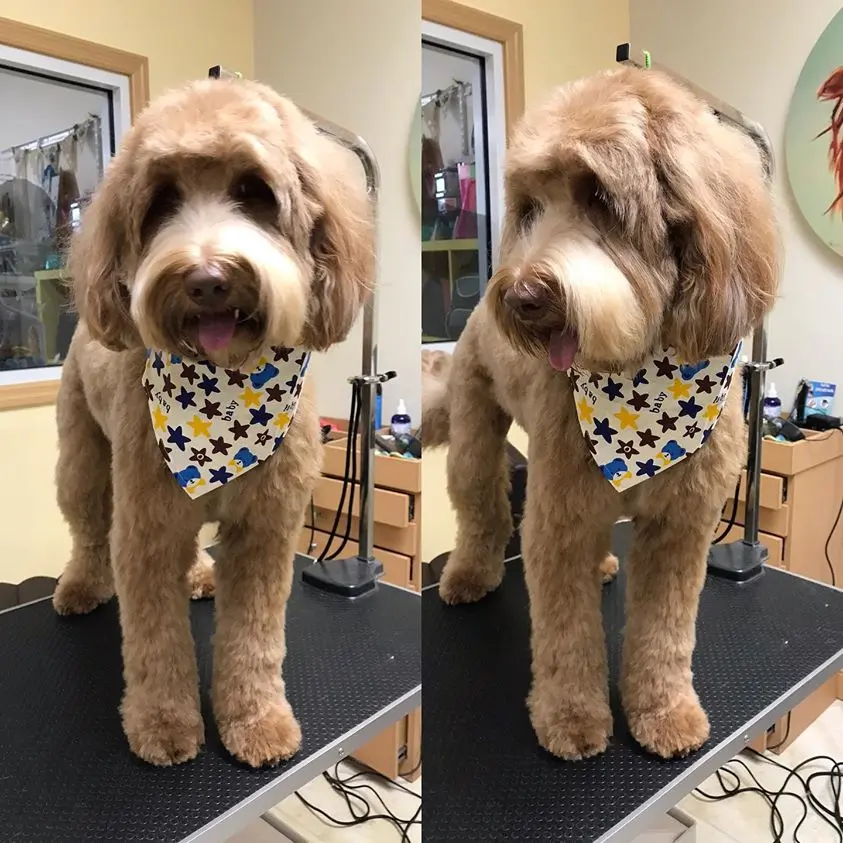
Visit Hachi Dog Grooming in Kendall for Expert Services
For Kendall residents looking for top-notch pet grooming services to prevent or treat dog matting, we invite you to visit our Dog Grooming Salon in Kendall. Our skilled professionals are dedicated to ensuring your dog’s coat is healthy, mat-free, and looking its best. Contact us to learn more about our dog grooming services and how we can help your beloved pet.
Additional References about Dog Matting
- American Kennel Club (AKC): An article or guide about dog coat care or grooming tips. The AKC is a reputable source and widely recognized in the dog community.
- PetMD: An informative piece on the importance of grooming for dog health. PetMD is a trusted source for pet health information.
- PreventiveVet: An article on how regular grooming can prevent common dog health issues. PreventiveVet is known for providing expert veterinary advice.
- WikiHow: Information on the best diet for maintaining a healthy dog coat. WikiHow is a reputable source for diverse information, including pet health.
- ASPCA (American Society for the Prevention of Cruelty to Animals): General guidelines on dog grooming and care. ASPCA is a well-respected animal welfare organization.
About Hachi Dog Grooming in Kendall:
Hachi Dog Grooming in Kendall is your go-to destination for expert dog grooming services. Our skilled groomers are dedicated to the health and beauty of your furry friends, offering tailored grooming solutions for every breed. Experience the best in care and style for your dog with us.
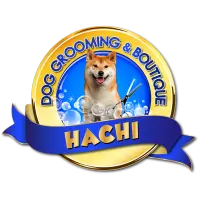
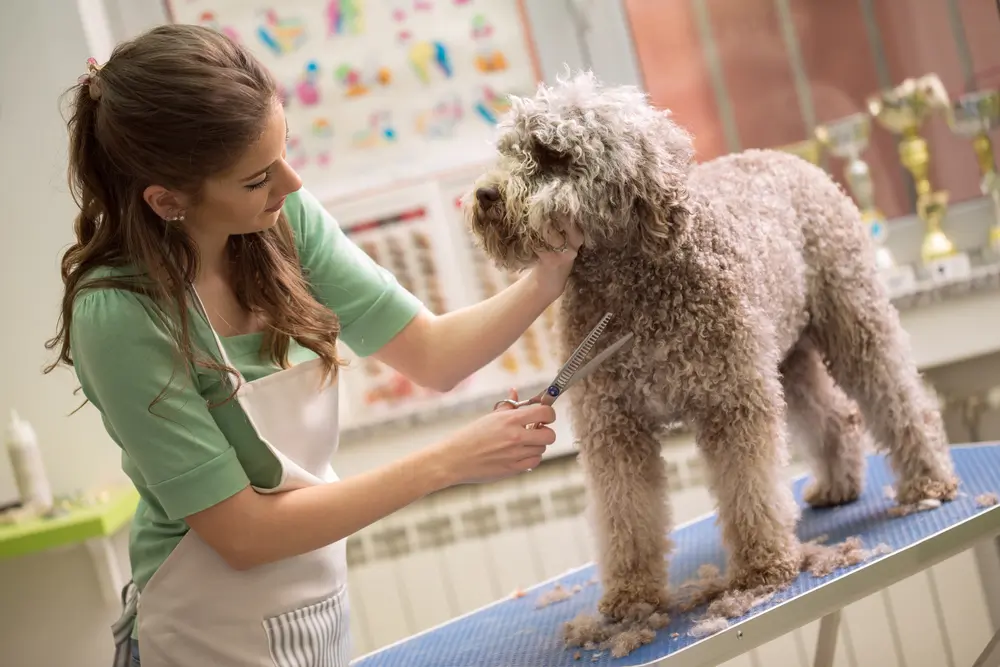
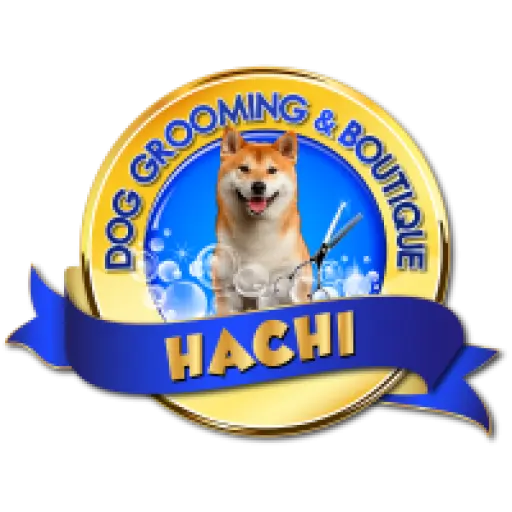
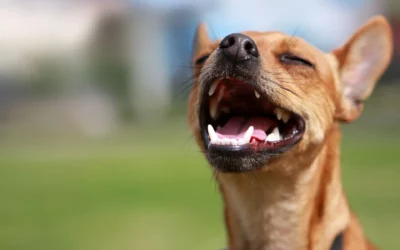
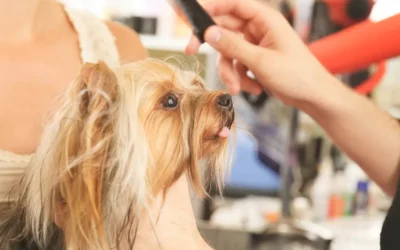
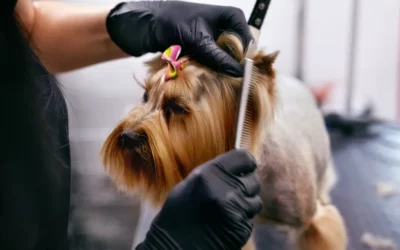
0 Comments